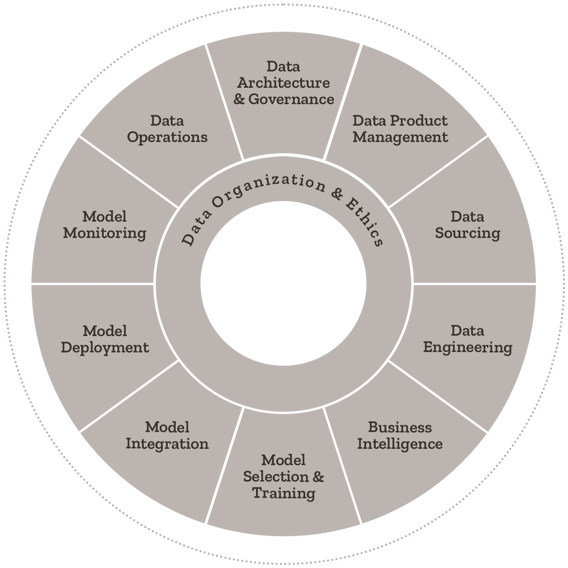How to Build AI Agents
From Code to Capability: A Practical Demo of Agentic AI in Action
In a recent Synaptiq webinar, Dr. Tim...
|
CONSTRUCTION & REAL ESTATE
|
 |
|
Discover how crafting a robust AI data strategy identifies high-value opportunities. Learn how Ryan Companies used AI to enhance efficiency and innovation.
|
| Read the Case Study ⇢ |
|
LEGAL SERVICES
|
 |
|
Discover how a global law firm uses intelligent automation to enhance client services. Learn how AI improves efficiency, document processing, and client satisfaction.
|
| Read the Case Study ⇢ |
|
HEALTHCARE
|
 |
|
A startup in digital health trained a risk model to open up a robust, precise, and scalable processing pipeline so providers could move faster, and patients could move with confidence after spinal surgery.
|
| Read the Case Study ⇢ |
|
LEGAL SERVICES
|
 |
|
Learn how Synaptiq helped a law firm cut down on administrative hours during a document migration project.
|
| Read the Case Study ⇢ |
|
GOVERNMENT/LEGAL SERVICES
|
 |
|
Learn how Synaptiq helped a government law firm build an AI product to streamline client experiences.
|
| Read the Case Study ⇢ |
 |
|
Mushrooms, Goats, and Machine Learning: What do they all have in common? You may never know unless you get started exploring the fundamentals of Machine Learning with Dr. Tim Oates, Synaptiq's Chief Data Scientist. You can read and visualize his new book in Python, tinker with inputs, and practice machine learning techniques for free. |
| Start Chapter 1 Now ⇢ |
By: Synaptiq 1 Nov 15, 2021 11:14:11 AM

Even with the best of intentions, AI projects regularly fail. This is because they require substantial representative data – and a knowledgeable team that knows what it means from a business perspective – in order to be successful. Frequently companies – in every industry – embark on an AI project without a clear understanding of their data maturity level, and also without a properly experienced in-house team.
For the purpose of this article and to provide illustrative examples, let's focus on the construction industry. Construction is ripe with data – from documents to contracts to images and videos – all of which can be leveraged to create solutions that streamline operations and save time, money, and lives.
Although construction companies have tons of data, sometimes they have not been able to establish proper data governance and understanding of their data, which leaves construction innovation teams short when embarking on AI projects. However, this is entirely fixable, if you know what to look for – and how to get there.
In this piece, we will outline the concept of data maturity, how to evaluate what “level” your company is at currently, and provide recommendations for your internal team.
Many companies do not know what data they even have on hand. Many times this data is redundant but named differently across systems, or the team has not defined a system of record for specific types of data.
In the field of artificial intelligence, you will hear the terms “data maturity” and “data mastery” frequently. Data maturity refers to how much data you have and how long it has been collected. Data mastery means that your organization knows what to do with it and how to leverage it.
Data governance refers to the collection of principles, practices, and systems a company uses to ensure that its data is high-quality and organized. A company has strong “data governance” when it knows exactly what data it has, where its data is stored, who and what has access to it, and why. Since AI relies on data, data governance is an important ingredient to get the most out of AI investments.
This isn’t to say a company must know everything about its data to embark on an AI project; rather, for a given use case, the firm must know what data is available to feed to an AI algorithm, how to gather enough quality data to be successful, and how to ensure the data is representative of real-world scenarios.
The reality of AI-enabled digital technology is that more data means better outcomes. Companies should start collecting data as soon as possible – and treat this data as a competitive advantage – to avoid falling further behind the innovation curve.
Broadly, data maturity is a measurement of the “usability” of an organization’s data.
In the unlikely case that an organization has no data — no file cabinets, electronic records, etc. — they have “negligible” data maturity – since no data means no usable data. Marginally better-off is actually an organization with lots of disorganized data. This second organization has data, but it is largely currently unusable due to disorganization. This can be corrected.
The ideal case is an organization with a good amount of well-governed data. This organization knows exactly what data they have, who has access to it, and why. They have robust data-collection systems in place for many (if not all) of their business processes.
The following graphic displays the anatomy of a world-class data and AI organization. Companies interested in pursuing AI solutions should assess themselves using this placemat of key topics.

To be ready for AI solutions, you should have a good understanding of the data sources you have in place to feed models for specific use cases, and some know-how in how to collect that data using existing systems.
One example of this is having a data warehouse or a reporting system. If a data warehouse or reporting system exists for a business process, typically this means that your IT team has spent time understanding some, if not all, data that exists to address that business process. If you have a good sense of where you are in terms of data maturity, you can identify where the gap is, and what needs to be solved from a data mastery perspective.
As an example, let's go back to the construction industry. Synaptiq recently developed a machine vision solution for construction companies to monitor site productivity and audit site safety where users are able to designate regions of interest in incoming video feeds, train the solution to detect any visual objects (such as people and equipment), and review resulting reports. This solution is applicable in a variety of industries – not just construction.
With this solution, detailed logs for each detected object (e.g., PPE) are available as outputs to be integrated with existing back-end systems for analysis, reporting, real-time monitoring, and alerts related to project management, scheduling, health and safety, security, and other purposes.
None of this would have been possible without hundreds of images collected and properly labeled to train with our AI models. By working closely with clients to ensure we had the data we needed, we achieved the desired results.
Your internal team is important – whether you go the packaged solution route or build customized solutions with a professional service provider. This field is called data science for a reason; this is not traditional software programming with a specific start and an end – data science requires experimentation and tuning to find the optimal solution. This requires a strategic, experienced, internal team, to test hypotheses together and ultimately find the answer.
Education and awareness are some of the most important things you can achieve to have a successful outcome. Conduct research on the domain and try to capture the basics of machine learning in your field. The more technically engaged your team is, the more successful the project. This, in tandem with having solid data mastery, will be the key to your success.
Synaptiq helps organizations lay the foundation for a world-class data organization. Our industry expertise includes financial services, logistics and transportation, healthcare, and more. We are happy to work with clients to help them prepare their data, train and evaluate models, integrate models, deploy, monitor, and evaluate models. We also regularly work with companies to help them establish a data strategy and governance, design data architecture, and collect data, prior to its preparation and training for models. Bottom line, no matter where you are in the data maturity curve, Synaptiq is happy to work with you to get you where you need to be successful.

Synaptiq focuses on the humankind of AI; building a better world as we lean into an age of human and machine interaction. We believe solving serious challenges, making real impact and saving lives is worth every waking moment. So we collaborate and make thoughtful considerations across disciplines examining past, present and future models of merit. Whether history, science, math, nature, human behavior; they all inform the data and ideas that help us find answers to world-class riddles.
We keep our AI on people because AI is how we do it, humanity is why we do it.
From Code to Capability: A Practical Demo of Agentic AI in Action
In a recent Synaptiq webinar, Dr. Tim...
December 15, 2025
2025 was the year AI stopped being a side project and became the strategy conversation in every serious boardroom....
December 15, 2025
You’ve invested in AI. The models are live. The tools are ready. But adoption is lagging. Why?Because AI adoption isn’t...
December 5, 2025